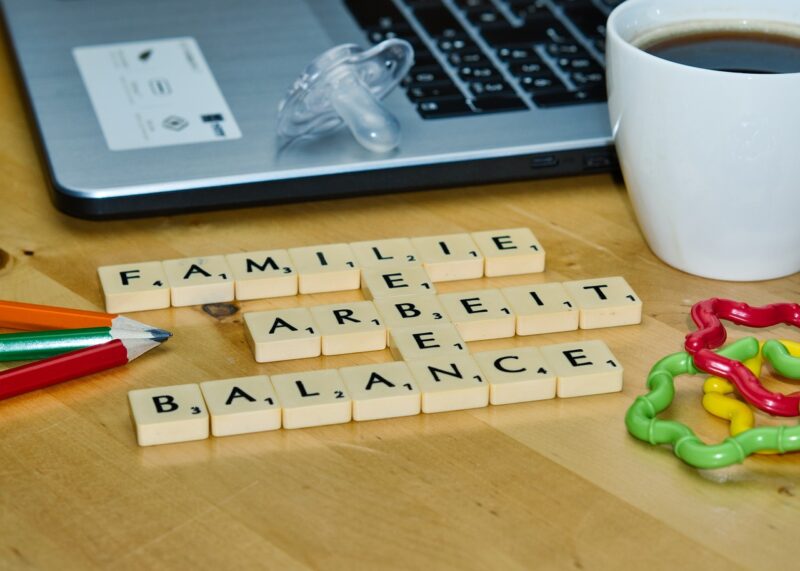Does Anyone Really Have ‘Balance’? Debunking the Work-Life Myth
November 10, 2024

In today’s fast-paced world, the idea of achieving a perfect work-life balance has become increasingly elusive. Many people feel pressured to excel in their careers while simultaneously being the perfect parent, partner, and friend. But does anyone truly have balance, or is it just a myth perpetuated by social media, workplace expectations, and societal norms?
—
The Origin of the Work-Life Balance Concept
The term “work-life balance” began gaining popularity in the late 1990s and early 2000s, reflecting a growing awareness of the negative impacts of stress and overwork on both personal and professional lives. It emerged as a response to the cultural expectations that dictated how individuals should distribute their time and energy between their work and personal commitments.
Historically, the idea of balance revolved around equating “time” to “happiness”; the more you could allocate specific amounts of time to work and home, the happier you would supposedly be. However, this notion often fails to accommodate the complexities of modern life. As technology blurs the lines between work and personal life, many people find it increasingly difficult to navigate these competing demands.
—
What Does ‘Balance’ Really Mean?
To understand whether work-life balance is attainable, it’s essential to dissect what it truly means. The traditional view suggests a 50/50 split between work and personal life, but is such a division realistic?
1. Subjective Experience: Work-life balance is not a one-size-fits-all concept. What may constitute balance for one individual may not work for another. For some, the pursuit of passion projects may require more time than traditional aspects of work, while for others, family commitments may take priority.
2. Dynamic Nature: Balance is inherently dynamic rather than static. Life stages, such as starting a family, pursuing higher education, or navigating a promotion, will shift priorities. Recognizing the transient nature of balance can help in re-evaluating life’s demands and personal aspirations.
3. Integration vs. Segmentation: Some experts argue that finding balance shouldn’t necessarily involve a strict separation between work and home life. For many, work-life integration might be a more appropriate approach. This means blending responsibilities — allowing for flexibility in working hours to accommodate personal commitments.
—
The Impact of Technology on Work-Life Balance
Advancements in technology have significantly reshaped how we work, offering flexibility but also leading to pervasive feelings of being “always on.”
– Accessibility: Smartphones, tablets, and laptops have made it easier to work from anywhere at any time. While this flexibility can lead to improved productivity, it can also stir feelings of obligation and pressure to respond to messages and emails beyond working hours.
– Remote Work: The rise of remote work offers significant benefits but can blur personal and work-related boundaries. Without clear delineation between when to work and when to relax, individuals may find themselves sacrificing personal time for professional demands.
—
Debunking the Myth: Real-Life Examples
Let’s explore the lives of a few individuals from different walks of life who attempted to balance work and personal life:
– Working Parents: Many parents report feeling guilt regardless of where their time is allocated. Those who devote hours to their job often express regret about missed family moments, while those focused on their families feel pressure to meet professional obligations.
– Entrepreneurs: Entrepreneurs frequently face challenges in establishing boundaries between work and life. The drive to grow a business often leads to extended hours that can encroach upon personal time, leading to burnout.
– Corporate Executives: Surprisingly, those in high-level positions also struggle with achieving balance. The pressure to perform can lead to sacrificing personal time, which ultimately affects mental and physical well-being.
The stories of these individuals highlight the harsh truth: the balance we strive for often feels like chasing an ever-moving target.
—
Strategies for Redefining Balance
Instead of seeking an elusive perfect balance, we can apply the following strategies to create a more fulfilling integration of our work and personal lives:
1. Set Boundaries: Determine your non-negotiable personal time. Whether it’s family dinners or a daily run, protect this time fiercely.
2. Communicate Needs: Openly discuss boundaries with employers, colleagues, and family members. Encourage a workplace culture that respects personal time and prioritizes mental health.
3. Prioritize Self-Care: Allocate time for activities that recharge you, such as exercise, hobbies, or downtime. A well-rested individual is more productive and present in every aspect of life.
4. Review and Adapt: Regularly assess your commitments and prioritize activities that align with your values. Be open to adjusting your approach as life changes occur.
5. Cultivate Mindfulness: Practicing mindfulness can enhance focus and satisfaction in both work and leisure activities. By being present in each moment, you can alleviate the anxieties associated with the balance challenge.
—
Conclusion: Embracing the Complexity of Life
Ultimately, the concept of work-life balance may be more myth than reality. Instead of striving for an unrealistic ideal, embracing the nuances and complexities of modern life can lead to greater fulfillment. Be it juggling responsibilities, redefining personal values, or acknowledging that imbalance is okay, the goal should be to create a lifestyle that resonates with your aspirations.
Life is a series of choices. As we grow, our definition of what it means to have “balance” will also evolve. Acknowledging this fluidity offers greater freedom and satisfaction, empowering us to shape our own narratives, one choice at a time. Embrace the beautiful chaos; after all, it’s what makes life rich and meaningful.







